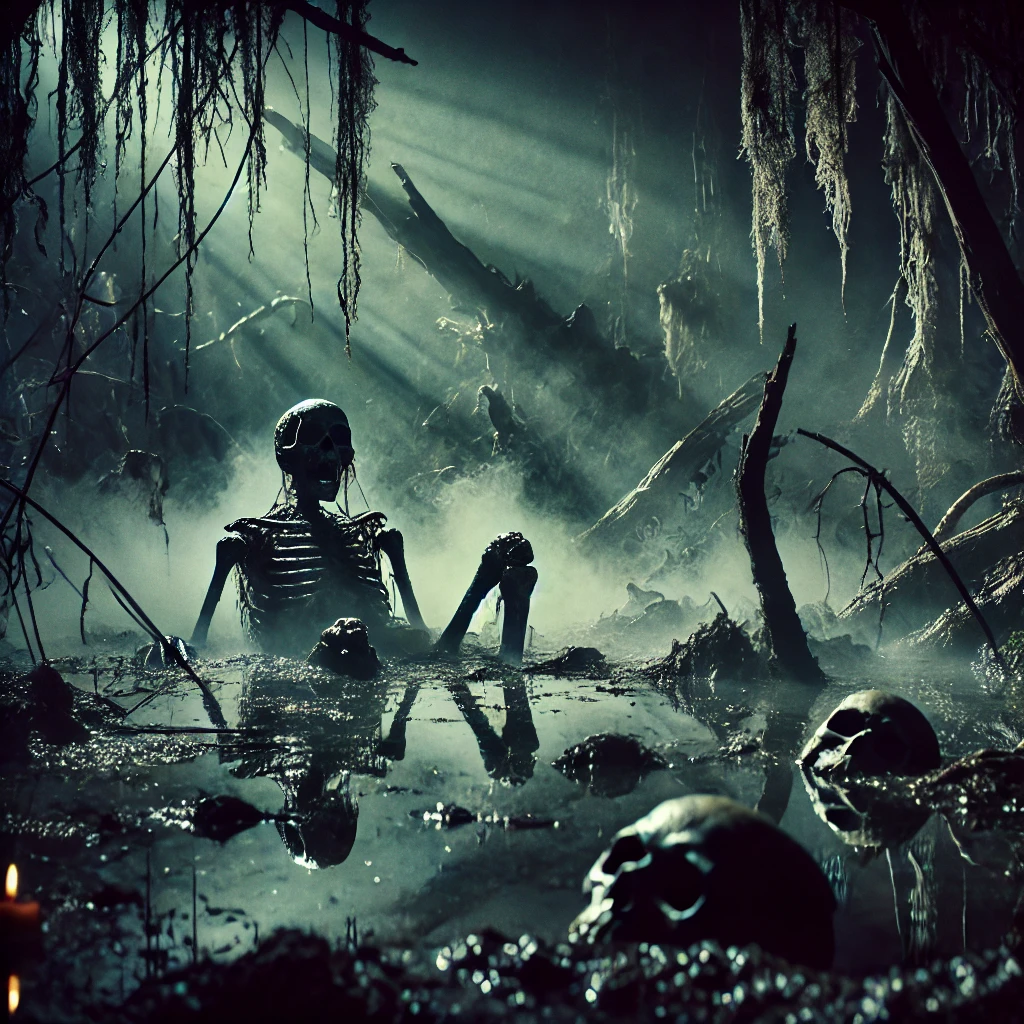When discussing horror films that have left a significant mark on cinematic history, few evoke the chilling intrigue of Poltergeist (1982). Directed by Tobe Hooper and produced by Steven Spielberg, this supernatural thriller has been the subject of numerous urban legends, behind-the-scenes rumors, and eerie coincidences. One of the most controversial aspects of the movie is the claim that real skeletons were used during filming. This revelation has not only fueled conspiracy theories but has also added an unsettling layer to the film’s legacy. Here, we delve into the details of this claim, exploring its context, implications, and the reasons behind this startling decision.
The Scene That Sparked the Controversy
The scene in question occurs during the film’s climax, where Diane Freeling, played by JoBeth Williams, falls into a swimming pool filled with skeletal remains. These skeletons suddenly emerge from the murky water, creating a visually terrifying moment that remains etched in viewers’ minds. While the scene’s realism contributes significantly to its impact, it is this authenticity that has sparked the controversy—were these skeletons actually real?
Years after the film’s release, JoBeth Williams disclosed in interviews that real skeletons were indeed used in the scene. According to Williams, the decision to use real human remains was based on practical and financial considerations. At the time, creating realistic fake skeletons was prohibitively expensive, while acquiring medical-grade skeletons, often used for anatomical studies, was significantly cheaper. This revelation shocked fans and raised ethical questions about the practices of the film industry.
Historical Context: Real Skeletons in Hollywood
The use of real skeletons in Hollywood productions was not unprecedented. In earlier decades, real human bones were frequently used in films due to their availability and authenticity. Anatomical skeletons were often sourced from medical suppliers or educational institutions. For instance, the skeleton in Alfred Hitchcock’s Psycho (1960) and other horror films of the era were rumored to include real human remains.
By the 1980s, however, advancements in prop-making had made the use of synthetic materials more common. Yet, in the case of Poltergeist, the filmmakers opted for real skeletons, reviving an older practice that many believed had been left behind. This decision not only reflected the budgetary constraints of the production but also the desire for heightened realism in a film that sought to terrify audiences with its visceral imagery.
Ethical Implications of Using Real Skeletons
The revelation that real skeletons were used in Poltergeist has prompted debates about the ethics of such practices. While the use of human remains for medical education is widely accepted, their use in entertainment raises moral concerns. Were the individuals whose remains were used in the film aware that their bodies might end up as props in a horror movie? Did they or their families consent to such usage?
These questions highlight the blurred lines between art, commerce, and respect for human dignity. Critics argue that the film industry’s use of real skeletons exemplifies a lack of ethical oversight. Others, however, contend that the practice reflects the realities of an era when such considerations were less scrutinized.
The Curse of Poltergeist: Fact or Fiction?
The use of real skeletons has also been linked to the so-called “Poltergeist Curse,” a series of tragic events that befell several cast members. Dominique Dunne, who played the eldest Freeling daughter, was tragically murdered shortly after the film’s release. Heather O’Rourke, the young actress who portrayed Carol Anne, died unexpectedly at the age of 12 during the filming of Poltergeist III.
These incidents, combined with the eerie realism of the film and the use of real skeletons, have led many to believe in a supernatural curse surrounding the production. While skeptics dismiss these claims as mere coincidences, the idea of a curse has become an integral part of the Poltergeist legend, enhancing its mystique and perpetuating its place in popular culture.
Behind the Decision: Practicality vs. Morality
The decision to use real skeletons in Poltergeist was primarily driven by practical concerns. According to special effects artist Craig Reardon, who worked on the film, obtaining real skeletons was easier and cheaper than fabricating realistic replicas. Reardon stated that the skeletons were sourced from medical supply companies and were commonly used for educational purposes. He defended the decision, arguing that the skeletons were treated respectfully and used solely to enhance the film’s visual impact.
However, this explanation has not satisfied critics who view the practice as exploitative. The debate underscores the tension between artistic ambition and ethical responsibility, raising questions about how far filmmakers should go to achieve authenticity.
The Legacy of Poltergeist
Despite the controversies, Poltergeist remains a landmark film in the horror genre. Its innovative special effects, compelling narrative, and chilling atmosphere have cemented its status as a classic. The film’s association with real skeletons and the alleged curse have only added to its enduring allure, making it a subject of fascination for film historians, horror enthusiasts, and conspiracy theorists alike.
The legacy of Poltergeist also serves as a reminder of the evolving standards in filmmaking. Today, the use of real human remains in films would likely be met with widespread condemnation and legal challenges. Modern audiences demand greater transparency and ethical accountability from filmmakers, reflecting broader societal shifts in attitudes toward human dignity and respect.
Conclusion
The claim that The 1982 Movie Poltergeist Used Real Skeletons as – Tymoff continues to captivate and unsettle audiences. While the decision to use real skeletons was rooted in practical considerations, it has sparked enduring debates about ethics, authenticity, and the boundaries of artistic expression. The controversy, combined with the film’s cultural impact and the tragic events associated with its cast, ensures that Poltergeist remains one of the most talked-about films in cinematic history.
As the film industry continues to evolve, the legacy of Poltergeist serves as a cautionary tale about the importance of balancing creativity with ethical responsibility. Whether viewed as a masterpiece of horror or a case study in controversial filmmaking practices, Poltergeist stands as a testament to the power of cinema to provoke thought, evoke emotion, and leave an indelible mark on the cultural landscape.



